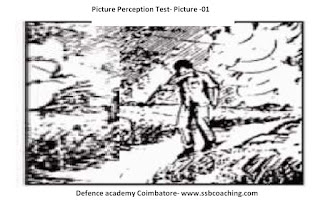FREE REVISION TEST FOR RMS AND SAINIK DAY 1
Defence Academy Coimbatore
A leading coaching academy for
Sainik, Military and RIMC Schools,
NDA, IMA, AFCAT
SSB, FSB Interview
http://www.ssbcoaching.com
call 094437 20076
Chapter 1: The Earth
in the Solar System
Let us revise:
·
The Sun, the moon all those objects shining in
the sky are called celestial bodies.
·
Celestial bodies which have their own heat and
light are called Stars.
·
The Sun is a Star.
·
Various patterns formed by different groups of
Stars are called constellations. E.g
Ursa Major
·
The Small Bear or Saptarishi is a group of
seven Stars
·
The North Start indicated the North
direction. It is also called the Pole
Star.
·
A galaxy is a huge system of billions of stars
and clouds of dust and gases. Our solar system is a part of the Milky Way
galaxy, also known as Akash Ganga.
·
Comets are luminous heavenly bodies with a
glowing tail. Comets probably consist of ice, dust and frozen gases.
Solar System
§
The Sun, nine planets satellites, asteroids and
meteoroids form the solar system.
§
The sun is in the center of the solar system.
§
It is made up of extremely hot gases.
§
The sun is about 150 million km away from the
earth.
§
Planets:
§
There are nine planets in our solar system.
§
The nine planets are Mercury, Venus, Earth,
Mars, Jupiter, Uranus, Neptune and Pluto.
§
Planets move around the sun in a fixed orbit.
§
Mercury is the nearest planet.
§
Pluto is farthest planet
§
A new planet 2003 UB313 has been discovered. It
is bigger than Pluto and is farthest from the Sun.
§
There are four planets larger than Earth, they
are Jupiter, Saturn, Uranus and Neptune
§
Jupiter, Saturn and Uranus have rings around
them.
§
Venus is the first celestial body to become
visible in the sky at evening and is the last one to disappear from the sky at
sunrise. That is why, it is called the Morning and the Evening Star.
EARTH:
v
It is the third nearest planet to the sun and
fifth largest planet of our solar system.
v
The earth is a unique planet because it supports
life.
v
It is called the Blue Planet.
v
Its shape is GEOID.
MOON:
ü
It is only satellite of the earth.
ü
Its diameter is one-quarter of the earth.
ü
It is about 3, 84,400 km away from us.
ü
It moves around the earth is about 27 days.
ü
Only one side of the moon is visible to us on
the earth.
ü
No life exists on moon as it has neither water
nor air.
ASTEROIDS:
·
They are numerous tine bodies which move around
the sun between the orbits of Mars and Jupiter.
·
The largest asteroid is the Ceres.
METEOROIDS
v
The small pieces of rocks which move around the
sun are called meteoroids
v
Our solar system is a part of Milky Way Galaxy.
v
Milky Way galaxy was named Akash Ganga.
v
There are millions of galaxies that make the
Universe.
Terms used in
Astronomy
Ø
The
Science of studying planet and other heavenly bodies is known as Astronomy.
Ø
FULL MOON Night, A night when the moon is
visible from the earth as a full sphere is called the Full Moon Night, and it
occurs once a month.
Ø
NEW MOON Night: the fifteenth night after the
Full Moon Night, when the moon is not visible at all in the sky, is called the
New Moon Night.
Ø
Satellites: A celestial body which revolves
around a planet in a particular orbit is called a satellite.
Ø
Celestial Body: An object in the universe (but
not on the earth) is said to be a celestial body. Examples are, Sun, Earth,
Moon, Stars, etc.
Ø
A star differs from a planet because Star emits
its own light while Planets do not have their own light.
Ø
The distance that light travels in one year is
called Light Year.
Ø
The distance between the Sun and the Earth is
150 million km approximately.
Ø
Equator:
An imaginary line running of the globe divides it into equal parts. This line
is known as Equator.
Ø
Latitude:
All parallel circles from the equator up to the poles are called Parallels
of Latitude. Latitudes are measured in Degrees.
Ø
As we move away from the Equator, the size of
the parallels of latitude decreases.
Ø
The four important Parallels of latitude are:
Ø
Tropic of Cancer ( 23 ½ °N)


Comments
Post a Comment